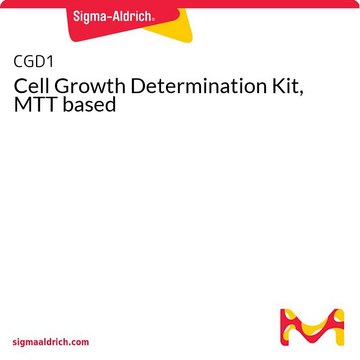1.00326
Hydrogen chloride solution
c(HCl) = 0.1 mol/l (0.1 N) in 2-propanol, DIN ISO 6618, for titration in non-aquous media, Titriplex®
Sinónimos:
Hydrogen chloride solution
About This Item
Productos recomendados
product name
Hydrogen chloride solution, 0.1M in 2-propanol, acc. to DIN ISO 6618 part 1 c(HCl) = 0.1 mol/l (0,1 N), Titripur®
Nivel de calidad
Línea del producto
Titripur®
formulario
liquid
temp. de autoignición
425 °C (2-Propanol)
calidad
Analyzed in our ISO 17025 accredited QC lab
lim. expl.
2-13.4 % (v/v) 2-Propanol)
idoneidad de la reacción
reaction type: Acid-base reactions
concentración
0.1 M
técnicas
titration: suitable
pH
<0.5 (20 °C in H2O)
temperatura de transición
flash point 12 °C (2-Propanol)
densidad
0.79 g/cm3 at 20 °C
temp. de almacenamiento
15-25°C
Aplicación
- A highly selective electrochemical sensor for chloramphenicol based on three-dimensional reduced graphene oxide architectures.: This study presents the development of an electrochemical sensor for detecting chloramphenicol in aqueous solutions, leveraging the properties of reduced graphene oxide. Hydrogen chloride solution plays a critical role in the preparation of the graphene oxide, which is instrumental for the sensor′s high sensitivity and selectivity (Zhang et al., 2016).
- Effects of cross-linking molecular weights in a hyaluronic acid-poly(ethylene oxide) hydrogel network on its properties.: This research explores the impact of cross-linking with varying molecular weights on the properties of a hyaluronic acid-polyethylene oxide hydrogel. The use of hydrogen chloride solution in modifying the hydrogel structure is essential for optimizing its physical characteristics for potential analytical chemistry applications (Noh et al., 2006).
- [Determination of docosahexenoic acid in human serum by capillary gas chromatography].: This paper discusses a method for the determination of docosahexenoic acid in human serum using capillary gas chromatography, where hydrogen chloride solution is used during the esterification process of fatty acids, demonstrating its utility in enhancing the precision of analytical techniques (Li et al., 1997, article in Chinese).
Características y beneficios
This volumetric solution is analyzed by our calibration laboratory D-K-15185-01-00 which is accredited according to DIN EN ISO/IEC 17025 for analysis of amount-of-substance concentrations in volumetric solutions by DAkkS (Deutsche Akkreditierungsstelle - German National Accreditation Body). The accreditation certificate can be found at www.sigmaaldrich.com/ISO17025.
Envase
Nota de análisis
Amount-of-substance concentration 0.0994 - 1.006 mol/L
Measurement uncertainty ± 0.0004 mol/L
Traceability NIST SRM
The concentration is determined by volumetric titration and refers to 20°C.
The amount-of-substance concentration of this volumetric solution is determined with standardized sodium hydroxide solution (article number 1.09141). The sodium hydroxide solution is standardized by hydrogen chloride solution (article number 1.09060) which has been standardized against volumetric standard Tris(hydroxymethyl)aminomethane (article number 1.02408).
This volumetric solution is traceable to a primary standard reference material (SRM) from the National Institute of Standards and Technology, Gaithersburg, USA (NIST SRM 723 Tris(hydroxymethyl)aminomethane) by means of volumetric standard Tris(hydroxymethyl)aminomethane (article number 1.02408), certified reference material according to ISO 17034, analyzed by our accredited calibration laboratory of Merck KGaA, Darmstadt, Germany according to DIN EN ISO/IEC 17025. The uncertainty is expressed as expanded measurement uncertainty with a coverage factor k=2 covering a confidence level of 95%.
Note: The titer is a correction factor to correct for variations of the volumetric solution, the titration equipment, the temperature and other laboratory conditions. For correct titration results it is recommended to determine a titer with the laboratory specific equipment and under laboratory specific conditions directly after opening a new bottle and at regular time intervals.
Información legal
Producto relacionado
Palabra de señalización
Danger
Frases de peligro
Consejos de prudencia
Clasificaciones de peligro
Eye Irrit. 2 - Flam. Liq. 2 - Met. Corr. 1 - STOT SE 3
Órganos de actuación
Central nervous system
Código de clase de almacenamiento
3 - Flammable liquids
Clase de riesgo para el agua (WGK)
WGK 1
Punto de inflamabilidad (°F)
53.6 °F - (2-Propanol)
Punto de inflamabilidad (°C)
12 °C - (2-Propanol)
Certificados de análisis (COA)
Busque Certificados de análisis (COA) introduciendo el número de lote del producto. Los números de lote se encuentran en la etiqueta del producto después de las palabras «Lot» o «Batch»
¿Ya tiene este producto?
Encuentre la documentación para los productos que ha comprado recientemente en la Biblioteca de documentos.
Los clientes también vieron
Artículos
SmartChemicals enable wireless transfer of CoA data stored on an RFID tag on the consumable bottle to the titrator, reducing effort and chance for human error. Crucial data required for the application is transmitted safely, reliably and intelligently to the instrument.
Nuestro equipo de científicos tiene experiencia en todas las áreas de investigación: Ciencias de la vida, Ciencia de los materiales, Síntesis química, Cromatografía, Analítica y muchas otras.
Póngase en contacto con el Servicio técnico






